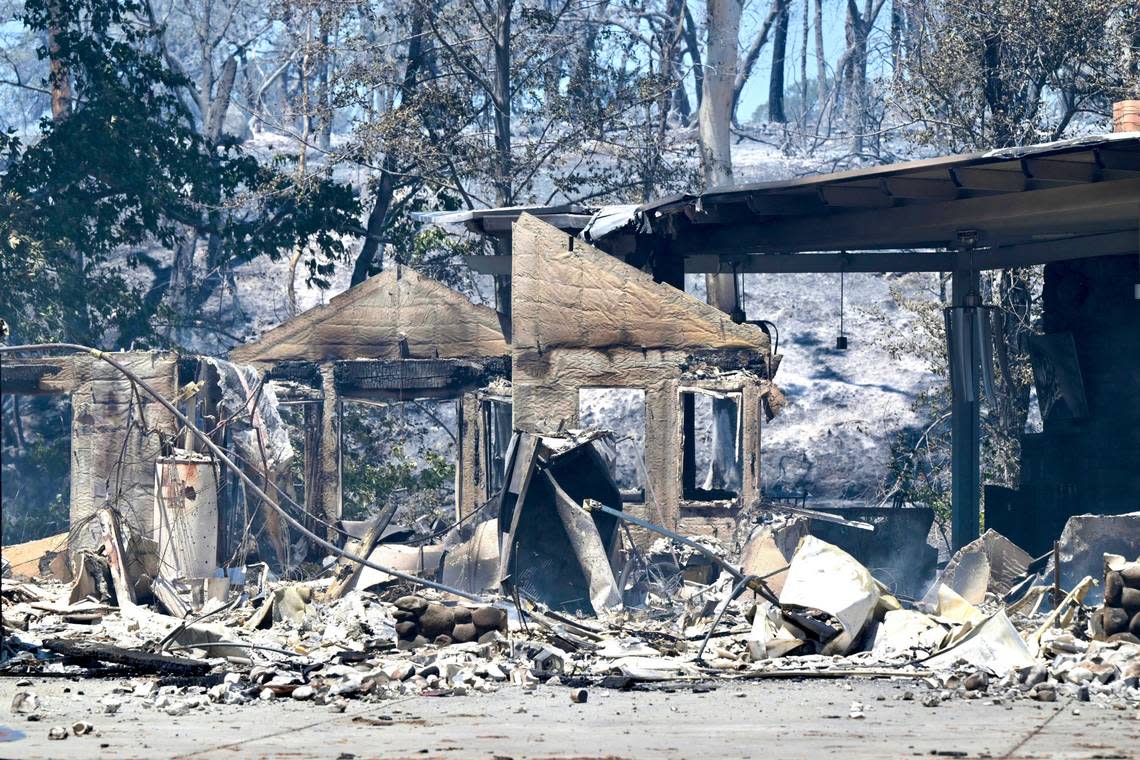Park Fire is California’s largest ever blaze caused by arson, say officials. What are the penalties?

The Park Fire devastating Butte County became California’s largest wildfire in recorded history caused solely by arson, state officials said, after police arrested 42-year-old Ronnie Stout on charges that he ignited the blaze by pushing a burning car into a gully.
What sort of penalties could the Chico resident face? According to arson investigators, the answer depends on whether he acted with malicious intent and what damages the blaze ultimately causes.
At 178,00 acres as of Friday, the Park Fire showed no sign of slowing down and was listed at zero percent containment. Some 134 structures had been destroyed.
Of the state’s 20 largest wildfires, according to Cal Fire, most are caused by lightning and non-arson human activity. Power lines are also a major factor, and some causes are unknown. Only one other incident was found to be partially caused by arson.
Reliable records go back to 1932, according to Cal Fire.
California has two main arson laws. Penal Code 451 defines arson as willfully and maliciously setting a fire or helping someone to burn a structure, forest land, or property. It’s a felony offense punishable by up to nine years in state prison.
In contrast, Penal Code 452 describes what’s called “reckless” burning, starting a fire that causes injury or damages property without malicious intent. This type of arson can be charged as either a misdemeanor or a felony.
The day after the Park Fire sparked and tore across bone-dry brush in Butte County Wednesday, arson investigators accompanied by police officers arrested Stout and booked him into jail on suspicion of starting the blaze.
According to Ramsey, witnesses told investigators they saw a man push a burning vehicle into a roadside gully before leaving the area. Stout is currently on probation for a DUI, and was previously convicted of child molestation and robbery.
Cal Fire declined to comment on the ongoing investigation and Butte County District Attorney Michael Ramsey did not respond to requests for comment prior to publication.
Arson is a relatively small but steady source of fire damage in California.
Since 2020, approximately 70,000 acres of the state were burned by fires attributed to arson, and Cal Fire arrested 580 people on suspicion of the crime, according to Cal Fire data. Year to year, arson accounts for about 10-15% of all California wildfires.
Investigators say a complicated set of factors tend to motivate a person to spark a wildfire that could burn out of control, destroy property and even take lives.
“The one thing I’ve tied it to is the majority of arsonists have very low self esteem,” said Alan Carlson, retired Cal Fire deputy chief and wildland fire investigator, is under evacuation warning in Chico.
“It’s mostly men, some women. But a lot of these men are married, some have children,” he said. Carlson added that many feel validation by making others react to their actions. “It’s baffling why anyone would sink to this, but it happens.”
Much of California’s wildlands are ripe to burn this summer, after two years of record wet winters followed by record hot temperatures left an overabundance of dry brush vegetation.
Despite worsening wildfire seasons, the state’s arson laws have been left mostly unchanged.
Robert Rowe, owner of Pyrocop, Inc., a Southern California based private fire investigation company, said some legal experts in the world of arson have suggested penalty enhancements for offenses that occur during fire season. But each case is specific.
“For every fire investigator, the key is to understand all the facts,” he said. “There’s nothing worse than pulling that trigger because an arson charge can ruin someone’s life. Your case better be accurate.”
Fires caused by arson, lightning, or accidents wouldn’t burn this far or this fast with better forest management, said Paul Mason, vice president of policy initiatives at Pacific Forest Trust.
Virtually all of California is going to burn at one point or another, he said, but prescribed burns allow us to do it during good weather conditions when they’re far less likely to become dangerous.
“There are things we can be doing to reduce the risk of these super large fires,” he said, regardless of the cause of this particular incident. “We’re not doing enough of them yet.”
